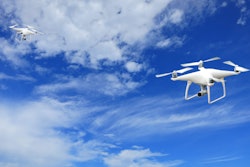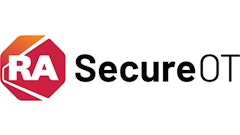
Mobile devices have proliferated into all aspects of modern society. They enhance communication and enable us to navigate, look up information, play games and music, stay on top of news - the applications are endless.
But too much of a good thing is rarely good, especially in a construction environment. Jobsites carry innate risks that require careful attention to the operations and surroundings. Even traveling from one place to another can present safety and liability risks. Distractions that take attention away from the task at hand can have potentially devastating consequences.
Distractions are also a “productivity suck” – they pull attention away from the job. Think about your last text conversation. How much time did it take? Maybe only a few minutes, but in that time, work stopped and the focus that was lost had to be recovered before work could return to its peak.
Read Next: Technology, Innovation Drive Warehouse Safety
You can’t eliminate every distraction in the workplace, but one company is attempting to dramatically reduce those generated by mobile devices.
“TRUCE Software is focused on helping our customers get the best of what mobile technology has to offer while taking the appropriate affirmative steps to make sure that using that technology is not leading to downsides such as reductions in productivity or increases in accidents," says Joe Boyle, CEO.
“The nature of mobile devices has created a world where we’re always on – we’re always connected,” he continues. “Sometimes that makes us productive and sometimes that makes us distracted. Our goal is to help refocus the way that people are working and using their mobile technology.”
The company offers a platform for employers to manage device usage during work hours. It is designed to "serve up only those applications that are acceptable at any given point in time, suppressing those apps or functions which are distracting, dangerous and non-productive,” Boyle notes.
Three-pronged Approach
TRUCE Software was formed about a decade ago as Cell Control. It has since changed its name and, with the launch of its core services, grown exponentially over the past 18 to 24 months.
“At this point, we’re scaling very quickly,” says Boyle. “We have well over 400 customers and over 100,000 end users globally that are being supported by our technology every day.”
The company’s core offering is deemed intelligent, Contextual Mobile Device Management (CMDM). It is based on three key areas:
- Recognition: It begins with recognizing that acceptable use of mobile devices is based on context. “How you safely and productively use the device changes based on where you are and what you’re doing,” says Boyle. “For example, it’s fine for me to consume YouTube content on my mobile device when I’m sitting on my couch at home on Tuesday night… That same behavior when I am behind the wheel of a car on Wednesday morning is potentially disastrous. And that same behavior when I am at work is certainly nonproductive.”
- Defining policies: Once it’s recognized that acceptable use changes based on environment, a plan must be formulated, and policy established that identifies those concepts. Examples might include restricting phone use to only taking calls via Bluetooth and navigation while driving, or calling 911 in an emergency when operating heavy equipment.
- Bringing policies to life: Informing employees of company policies regarding mobile device usage helps, but more critical is the ability to “bring that policy to life on the individual mobile devices – and to have those policies only come to life at the appropriate times,” Boyle states.
“Our application gives you the framework to do each of those three things,” he adds. “We’re going to manage the device such that the usage – the things that an employee can get to on their phone – are in complete compliance with your acceptable-use policy.”
TRUCE’s CMDM platform is comprised of a web-based administration portal, a commercial-grade downloadable business app and available beacon technology.
Read Next: Four Steps to Successfully Deploy Android in Your Supply Chain
The administration portal is used to design policies around your work zones and the risks entailed, then establish policy based on the particular application or environment. It can also be used to view insights into the types of activities being managed and the number of unauthorized device interactions that have been suppressed.
The mobile app – which works with any major cellular network and on Android or Apple devices – manages the user experience for each device and is completely transparent to the user.
Beacon technology is an optional component entailing deployment of beacons into the environment to capture more contextual data. A small, lightweight beacon is used to help identify “micro context indicators.”
For example, say a policy is in place restricting phone usage while operating a dozer. “Bulldozers are not the fastest-moving pieces of equipment in the world. We could rely on the phone’s built-in accelerometer to detect context such as the movement at slower speeds, but then the app may not know the difference between when you’re driving that dozer and when you’re riding your bicycle. We don’t want to do that, so the context needs to be more specific.” That’s where the beacon technology comes in – it can capture the micro context indicators that help identify such nuances.
TRUCE uses a subscription-based model designed to be affordable for companies of all sizes. “We believe that we’re helping workers to be more productive and… to be far safer,” says Boyle. “It’s a simple monthly subscription-based model, so it makes it very easy to implement, very affordable for our customers [and with] a strong ROI.”
Recognizing It Is For Their Benefit
Existing customers use CMDM to manage both personal and corporate-issued devices, depending upon circumstances. “The decision really rests with the customer,” says Boyle. “On a company by company basis, they evaluate and determine what makes the most sense.”
Acceptance among employees can be a challenge initially. Yet, Boyle believes that most employees recognize there are times when they are engaging in behavior that is unsafe or not in their best interest. Yet, they may feel powerless to stop. “Most people would generally admit a level of addiction to their device,” Boyle points out.
Education about what CMDM is designed to do – and not do – can assuage employee concerns. “It’s the contextual awareness that I think helps people get their head wrapped around it,” says Boyle. “You know we’re not gathering data about you, we’re not inspecting what you’re doing. But when you are in a high-risk work setting, TRUCE is going to limit the access to your applications.”
Boyle likens it to being in a “policy-enforced zone” based on work hours, application and/or location. “We do want to manage your device usage when you’re on the jobsite to keep you safe and productive, but we don’t want to manage your device usage when you’re getting into an Uber to go out with friends, or when you’re at your child’s soccer game,” he explains. “So, we’re present when we should be, and we disappear into the background when we shouldn’t.”
Once employees realize this, the technology tends to be embraced. “Repeatedly, when we implement customers, there is an initial question mark, but post-deployment, the employees become our greatest advocates,” Boyle asserts. “We hear things like, ‘You’ve made doing the job a pleasure again. You’ve made driving a pleasure again. I didn’t realize the extent to which I was engaging in very risky behaviors.’
“I think our customers’ employees recognize that this really is something that makes a positive difference for them,” he adds.
End users of the CMDM platform have consistently seen between a 35% to 45% reduction in workplace accident rates. “The benefits show up very fast,” says Boyle, “because you’re not retraining behaviors, you’re not monitoring behaviors. You’re stopping the risks at their source.”
This article first originally appeared on our sister publication, For Construction Pros.


















